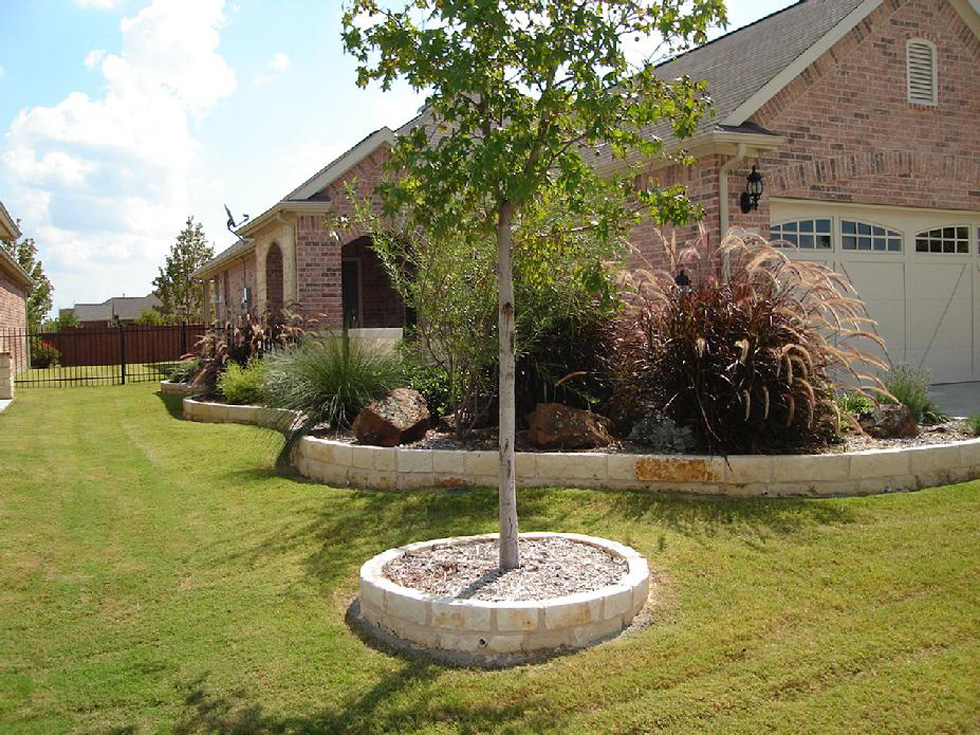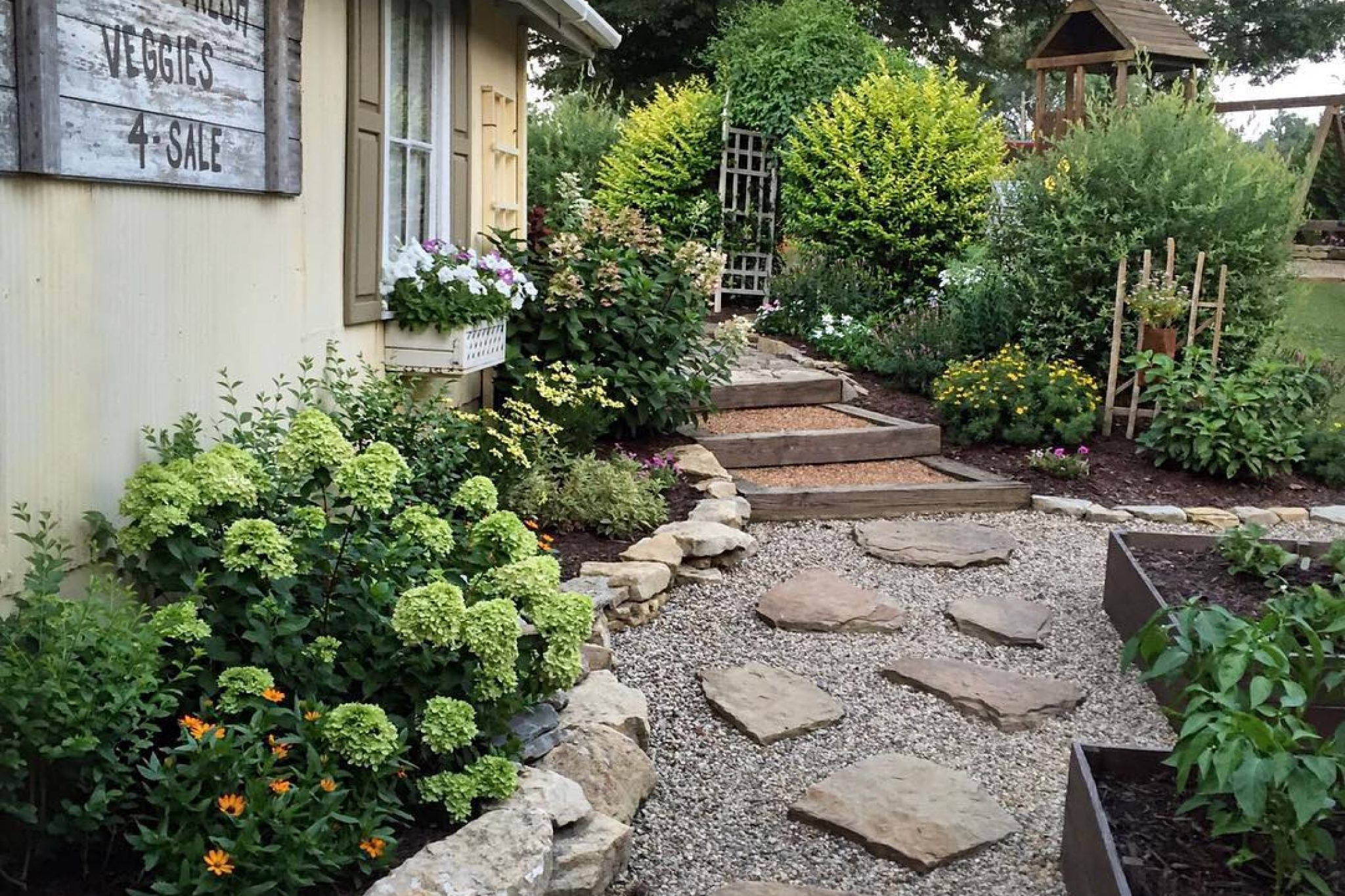It’s your yard to do with as you wish. And while that’s great, it doesn’t mean you have to spend every spare moment there, sprucing it up.
But, still, your landscaping could use a little something. Something easy, that is.
Here are five totally doable projects that your budget will barely notice, but your neighbors definitely will.
#1 Add Some (Tough) Edging

Tell your grass who’s boss with edging that can stand up to even the crabbiest of all crabgrasses.
But don’t make the mistake that many homeowners make of buying the flexible plastic stuff, thinking it will be easier to install. It’ll look cheap and amateurish from day one.
Worse, it won’t last. And before you know it, you won’t be able to tell where your garden bed ends and your “lawn” begins.
Instead, buy the more rigid, tough stuff in fiberglass, aluminum, or steel.
Tips on installing edging:
- Lay out a hose in the pattern you want.
- Sprinkle flour or powdered chalk to mark the hose pattern.
- Use a lawn edger (or spade) to make an incision for the edging.
- Tap the edging into the incision with a rubber mallet.
The cost? Mostly your time and up to $2 a square foot for the edging, depending on the material used.
#2 Create a Focal Point with a Berm

A berm is a mound of gently sloping earth, often created to help with drainage. You can also build berms to create “island beds,” focal points of textures and colors that are so much more interesting than plain ol’ green grass.
Plus, they’ll give you privacy — and diffuse street noises. What’s not to like about that? Especially if you live in a more urban area.
For most yards, berms should max out at two-feet high because of the space needed to properly build one.
They need a ratio of four to six feet of width for every foot of height. That’s at least eight feet for a typical two-foot-high berm. So be sure you have the room or decrease the height of your berm.
Popular berm plantings include:
- Flowering bushes such as azaleas
- Evergreens such as blue spruce
- Perennials such as periwinkle
- Tall, swaying prairie grasses
- Lots of mulch to keep weeds away
Depends on how big you make the berm, how much soil you need to buy to reach your desired height, and which plants you choose.
Plants usually account for a third to a half of the budget for a landscaping project like creating a berm. Here are some average costs:
- Perennials: $2 to $3 each
- Shrubs: $4 to $25 each
- Small trees: $60 to $140 each
#3 Make a Flagstone Wall
Aim to build a wall no more than 12 inches tall, and it becomes a super simple DIY project — no mortar needed!

How to build an easy flagstone wall:
- Dig a trench a couple of inches deep and wide enough to accommodate the flagstones.
- Fill with pea gravel and/or sand and tamp to make level.
- Lay out the flagstones to see their shapes and sizes.
- Stack the smaller stones first.
- Save the largest, prettiest flagstones for the top layer.
- Backfill with gravel.
Choose a stone of consistent thickness. Flagstone might be limestone, sandstone, shale — any rock that splits into slabs.
The cost? From $200 to $550 per ton (a ton of two-inch-thick stone is enough for a wall 10 feet long and 12 inches high).
#4 Install a Path with Flagstone or Gravel
There’s something romantic, charming, and simply welcoming about a meandering pathway to your front door or back garden. That means it has a super-huge impact when it comes to your home’s curb appeal.
You can use flagstone, pea gravel, decomposed or crushed granite, even poured concrete (although that’s not easy to DIY).
A few tips for building a pathway:
- Allow three feet of width for clearance.
- Create curves rather than straight lines for a pleasing effect.
- Remove sod at least three to four inches deep to keep grass from coming back.
- If you live in an area with heavy rains, opt for large, heavy stones.
The cost? You can expect to pay $15 per square foot for flagstone, which is the easiest to install but also the costliest. A gravel path will cost $1.40 per square foot, and concrete, $6 per square foot.
#5 Build a Tree Surround

Installing a masonry surround for a tree is a twofer project: It looks great, and it means you’ve got less to mow. Come to think of it, it’s a threefer. It can work as extra seating when you have your lawn party, too!
All it takes is digging a circular trench, adding some sand, and installing brick, cement blocks, or stone. Just go for whatever look you like best.
The trickiest part is getting an even circle around the tree. Here’s how:
- Tie a rope around the tree, making a loop big enough so that when you pull it taut against the tree, the outer edge of the loop is right where you want the surround to be.
- Set your spade inside the loop with the handle plumb — straight up and down. Now, as you move around the tree, the loop of rope keeps the spade exactly the same distance from the base of the tree, creating a nice circle.
Then build the tree surround:
- Dig out a circular trench about eight inches deep and six inches wide.
- Add a layer of sand.
- Set bricks at an angle for a sawtooth effect or lay them end to end.
- Fill the surround with two inches to three inches of mulch.
The cost? Super cheap if you use commonly available pavers and stones.
Related:
